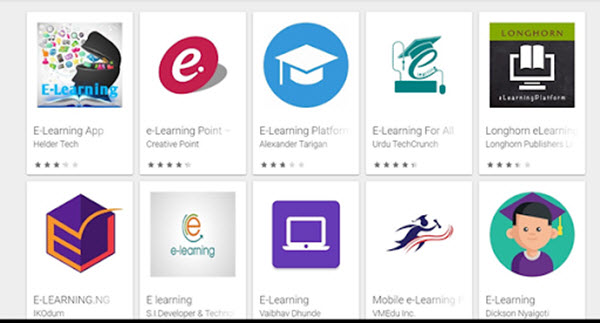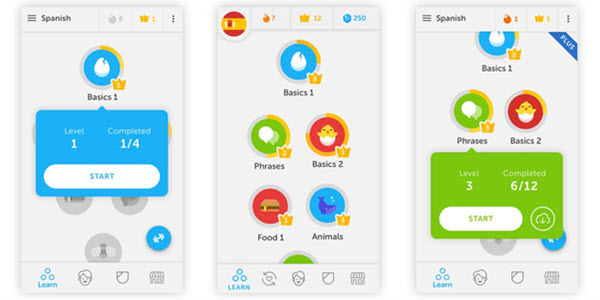5 Trends In E-Learning You Should Know For The Coming Decade
By Dumb Little Man
January 10, 2024

This year's pandemic has accelerated e-learning from a “good-to-have” to a “must-have” option for every organization. It's bringing to the forefront strategies that are on the rise and showing no signs of slowing down in the coming decade.
If you’re thinking of creating a course for your company, adding new courses to your e-learning website, or just curious about what the future of online learning looks like, this article breaks down five e-learning trends you should know.
Personalization of Learning Experiences
The great thing about e-learning is that it’s accessible to everyone from any part of the world with a strong internet connection. A downside to this is that it doesn’t allow a customized learning experience. It also doesn’t account for different skill levels or different time frames for learning.
Course creators have turned to Big Data Analytics to solve this problem. This means using analytics tools to get information on learner performance to offer personalized learning experiences.
Some e-learning platforms require participants to take a test to evaluate their knowledge level. This provides better learning material based on what learners don’t know on a particular subject. This saves the students' time sifting through stuff they already know.
From Big Data Analytics tools, course creators can also tell whether the ROI from training is increasing or not. Instructors can pinpoint exactly what’s missing from the course, making necessary adjustments so the course offerings are more worthwhile.
With the analysis from big data influencing training concepts and learning paths, the personalization of learning experience trend is just getting started.
Mobile Learning
What are the top three things modern learners want?
- Control on how much, when, and what pace they take a course
- Access to training on demand
- Training that syncs with their lifestyle
Given the above, it’s not surprise that the mobile learning craze is only going to increase in the coming decade. Over 91% of people are using phones and 9.9% of them are stating that mobile learning offers a better learning experience. With this, course creators are catching up with this trend by creating mobile apps that mimic the desktop software version of their site.

Flexibility and accessibility of mobile combined with immersive technology of e-learning creates a high-impact learning experience that will only get better in the coming years.
Interactive Videos
Video has been a major player in the e-learning industry. In the US alone, major TV networks make less movies and shows in thirty years compared with the number of new videos created every thirty days. This is an impact that only increased with the introduction of interactive videos, for which users can engage with the video content through the links and interactive objects that appear.
This is also something that was lacking in traditional video sharing platforms like YouTube and Vimeo. Through interactive videos, students go from passive watchers to active learners. They can navigate content using interactive transcripts, bookmarking tabs, and content tables.
Course creators can even add questionnaires to assess the impact of the material at various stages, or combine discussion and polls for a more experimental learning simulation. Of course, this is also to keep students engaged and monitor their progress throughout the learning path. Evidently, the added benefits from interactive videos are slowly making traditional e-learning videos obsolete.
Focus on Soft Skills
You may be aware of the ever-widening skills gap. But what you may not know is that it’s not the hard skills – programming or plumbing – that people don’t have. It’s the soft stuff.
Research from LinkedIn Learning revealed that in 2019 the most sought skills from Fortune 500 Companies were analytical reasoning and creative persuasion. Normally employees learned these skills from co-workers or bosses. But because this type of learning was infrequent, informal, not scalable or repurposable, it created more problems than it solved.
A more effective method many companies have started to use is creating a learning platform that allows anyone in the company to quickly shoot a video tutorial and upload it on the platform. The subject experts can keep track of what they haven’t covered. Moreover, student employees can take tests to demonstrate what they’ve learnt and send it over for evaluation.
Another option is having a course creator create learning materials for the company. These materials can cover topics that are difficult to teach without hands-on experience, helping employees stay current with soft skills trends and improve ability to succeed in the company.
Game-Based Courses
Have a boring topic and want to make it fun? Make it a game and watch as learners work hard to win. The fear of losing drives people to push themselves harder.

Game-based courses tap into this human condition by turning difficult or dull topics into game stages. Students become so immersed in the easy-to-navigate UI and interactive design of the game that they forget they’re working through a course.
Unlike other mobile games where players become addicted to matching candies or shooting villains, students actually get something useful from the experience. The more engaged you are the more content you understand, increasing the likelihood you’ll retain the material and apply it.
Given the effectiveness of game-based courses in streamlining the learning path, it’s no surprise it’s in our top five e-learning trends of the coming decade.
Dumb Little Man
At Dumb Little Man, we strive to provide quality content with accuracy for our readers. We bring you the most up-to-date news and our articles are fact-checked before publishing.


